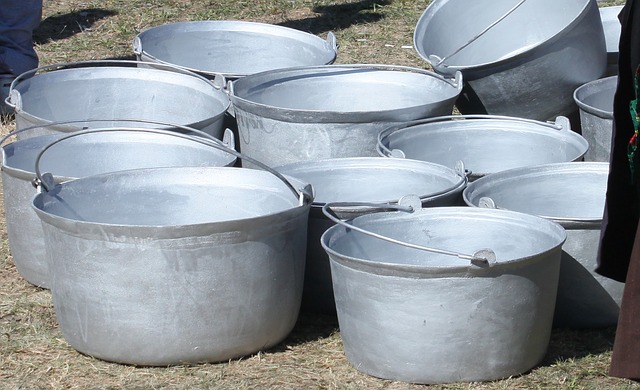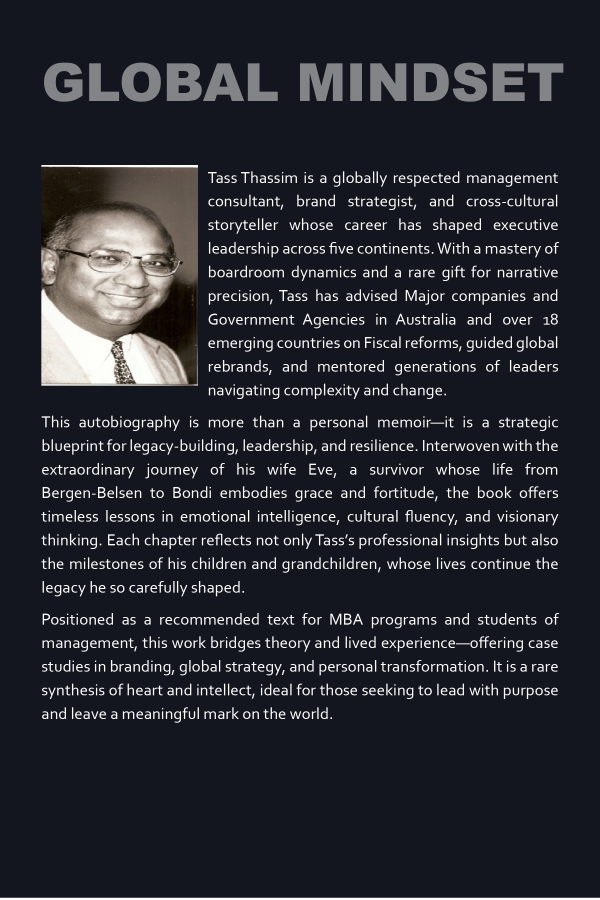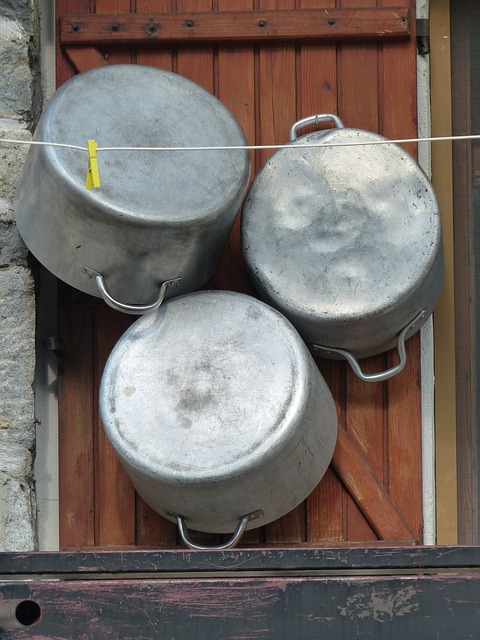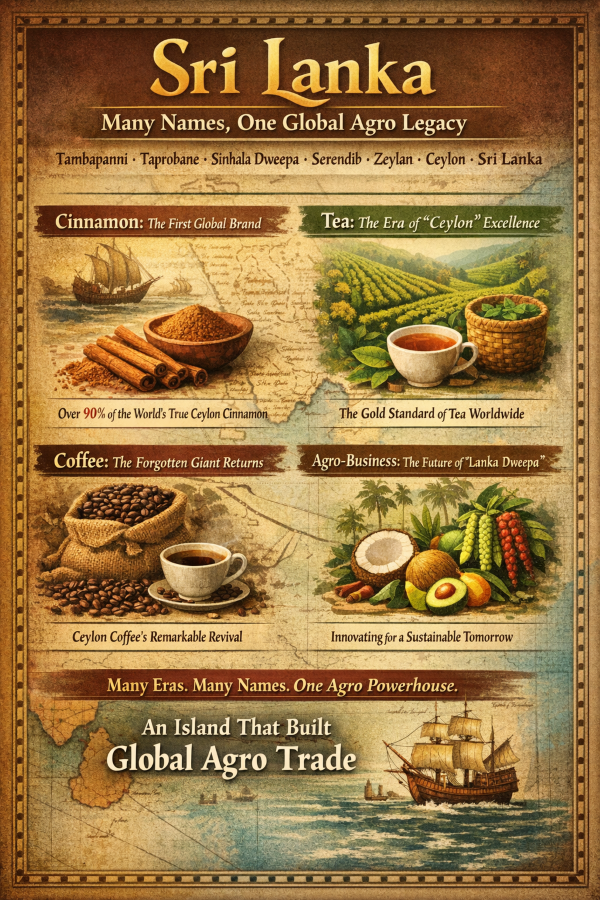Not many people are aware of the danger of cooking in Aluminium vessels – by Dr Hector Perera – London
Mainly in Western countries, in baking fish, roasting vegetables or preparing a piece of meat for dinner or even for baking cakes, they use aluminium foil. What you may not realise is that some of the foil will leach into your meal – and this could be bad for your health.
“Gamae Kadae”
Back home in Sri Lanka as well they use aluminium but not as much as in other countries. In Sri Lanka they make delicacies like “haelapa, wandu appa, pol roti” with vegetable leaves such as plantain leaves and with “kenda kola”. Those who know the taste of those delicacies know exactly what I mean. In some restaurants as well they serve some food on banana leaves for example “Thosae and wadae” are served on them with coconut sambol and gravy. No one complained about the health effects on eating and cooking on such leaves. One might not come across such village type of food in the city but if you drive off the main road to some village area to see those things in “gamae kadae”.
Cooking ingredients
Some people are unaware of the health risk of using Aluminium pots and pans for cooking. Most hotels and restaurants use Aluminium pots and pans because they are light weight to handle. When food such as rice get burned they normally removed by scraping the burnt food away then fresh Aluminium appears in them. That might get dissolved again to some extent into the food that means health risks. In cooking curries such as chicken, beef or even fish they add plenty of spicy ingredients and acidic ingredients such as lime, “goraka”, “biling” and tamarind. Aluminium is soluble in acidic and alkali substances that means in those curries there are traces of Aluminium due to acid and alkali attack. It is an amphoteric metal that means it dissolves in acids as well as in alkali. In some restaurants they leave those curries in those vessels that means there is a possibility of further dissolution of Aluminium into the food.
What Is an Alkaline Diet?
An alkaline diet is one that helps balance the pH level of the fluids in your body, including your blood and urine. Your pH is partially determined by the mineral density of the foods you eat. All living organisms and life forms on earth depend on maintaining appropriate pH levels, and it’s often said that disease and disorder cannot take root in a body that has a balanced pH. The normal pH of water is 7 and if the pH is higher, then they are alkaline. Acids such as sulphuric acid are very strong and the pH is one. There are other acids as well such as hydrochloric and nitric acid. Most soft drinks contain one or more of three common acids: citric acid, carbonic acid and phosphoric acid. Soft drinks with specific flavour ingredients may also contain other less common acids. The level of acidity in sodas can be quite high, and many dentists deplore its long-term effect on your teeth.
Tomatoes are acidic in the mouth and stomach, yet their alkaline residue alkalizes the body. The gastric acid in the stomach has a pH of 1.5 to 3.5, while the acidity of tomato juice falls between 4.1 and 4.6. The tamarind is best described as sweet and sour in taste, and is high in tartaric acid, sugar, B vitamins, and, unusually for a fruit, calcium. As a tropical species, it is frost sensitive. Health Benefits of Tamarind. As most ancient foods do, tamarind has a long history of medicinal uses. Many involve easing stomach discomfort, aiding digestion, and use as a laxative. Tamarind preparations are used for fevers, sore throat, rheumatism, inflammation, and sunstroke.
Aluminium is the most widely distributed metal on the planet and it’s used in the production of many every-day products. Cookware is made from aluminium, soda cans are aluminium, and aluminium foil is found in most kitchens. Aluminium is also found in antacids, aspirin, vaccines, and even flour. This overwhelming infestation of aluminium means that your risk of exposure is through the roof, which is also made of aluminium. Unlike vitamins, minerals, and trace elements, the body does not need aluminium. And aluminium is no innocent or benign participant. Aluminium accumulates in the kidneys, brain, lungs, liver and thyroid where it competes with calcium for absorption and can affect skeletal mineralization. In infants, this can slow growth. Animal models have linked aluminium exposure to mental impairments.
Why is Aluminium Exposure Harmful?
Just as cigarette smoke damages lung function and overexposure to UV rays will degrade your skin, aluminium is an attacker and its target is your central nervous system. Studies show that toxic metals contribute to brain diseases by producing oxidative stress and aluminium is one of the worst offenders.] The prevailing belief around the world is that aluminium is linked to degenerative brain diseases such as Alzheimer’s and Parkinson’s.
Aluminium: Bad for Your Brain
According to Washington DC’s Department of the Planet Earth, United States and Canadian regulatory agencies are interested in aluminium as a potential risk factor in elderly cognitive impairment. It makes sense, research shows aluminium can produce toxic, oxidative stress in the brain and a brain autopsy study of elderly persons found them to have aluminium levels 20+ times higher than a middle-aged group. The Agency for Toxic Substances and Disease Registry, part of the U.S. Department of Health and Human Services, recognizes aluminium as one of several metals known to affect the neurological system. As far as aluminium is concerned, the supreme brain-health concern is Alzheimer’s disease.
Aluminium and Alzheimer’s
Many of the formal inquiries into aluminium toxicity are specifically concerned with its association to Alzheimer’s. Consistently, experts agree that aluminium exposure is something to worry about.
The position of the Department of Neurology and Psychiatry at Saint Louis University is that aluminium may cause liver toxicity and lead to degenerative symptoms, including Alzheimer’s. Researchers at The School of Studies in Zoology at Jiwaji University in India describe aluminium as a potent neurotoxin associated with Alzheimer’s.
The University of California, Irvine’s Department of Medicine has reported that aluminium causes inflammation in the brain. No surprise, Alzheimer’s disease is often associated with elevated inflammation. The University School of Medicine in Belgrade published information showing that drinking water with a high aluminium and low fluoride concentration is associated with Alzheimer’s risk. Unfortunately, this is evident in New Guinea and Papua Islands where drinking water contains aluminium ions and ALS or Parkinson’s disease is collectively found. The concern about aluminium pollution in drinking water has even reached as far away as Egypt.
Aluminium as an Occupational Hazard
Exposure to aluminium, unfortunately, is common with some occupations like mining, factory work, and welding. Welding can be especially worrisome because it produces vapours that, when inhaled, send aluminium directly into the lungs in a “super absorption” status where it is released to the blood and distributed to the bones and brain. Researchers have repeatedly examined the consequence of inhaling aluminium vapours and the results are grim. Effects on memory and concentration have been cited. An Italian study that compared 64 aluminium dust exposed workers with 32 unexposed controls found significantly higher levels of aluminium in the exposed employees and findings suggested aluminium to be to blame for early neurotoxic effects.
Reduce Your Aluminium Exposure
Aluminium is one of the most abundant metals on earth and it has permeated mainstream products to the degree that it’s virtually impossible to completely avoid exposure. However, you can take certain measures to reduce your exposure. Use glass cookware instead of aluminium. Avoid hygiene products (antacids, deodorant) with aluminium hydroxide, natural substitutes are available. Avoid processed and frozen foods, their containers can contain aluminium. Instead opt for fresh, organic fruits and vegetables, and foods with responsible packaging.
Research that I conducted with a group of colleagues has explored the use of aluminium for cooking and preparing food. Aluminium doesn’t just appear in foil: it is the most popular cookware material used by people in developing countries. Pots and pans are lined with it and it is found in some kitchen utensils like large serving spoons. Copper used to fulfil this role, but over time it’s been replaced by aluminium because it is cheaper to mass produce and easier to clean.
But while cooking your food in aluminium pots or pans isn’t a bad thing, placing it in foil and putting it in the oven is problematic. This is especially true with acidic or spicy food that’s prepared at high temperatures.
Aluminium and health
Human bodies can excrete small amounts of aluminium very efficiently. This means that minimal exposure to aluminium is not a problem: the World Health Organisation has established a safe daily intake of 40mg per kilogram of body weight per day. So for a person who weighs 60kg the allowable intake would be 2400 mg.
But most people are exposed to and ingest far more than this suggested safe daily intake. Aluminium is present in corn, yellow cheese, salt, herbs, spices and tea. It’s used in cooking utensils, as described above, as well as in pharmacological agents like antacids and antiperspirants. Aluminium sulphate, which is derived from aluminium, is used as a coagulant during the purification process of drinking water.
Scientists are exploring whether over-exposure to aluminium may be posing threats to human health. For instance, high concentrations of aluminium have been detected in the brain tissue of patients with Alzheimer’s disease. Scientists have examined the community of old people with Alzheimer’s and concluded that it is a modern disease that’s developed from altered living conditions associated with society’s industrialisation. These conditions may include high levels of aluminium in daily life. Aluminium poses other health risks, too. Studies have suggested that high aluminium intake may be harmful to some patients with bone diseases or renal impairment. It also reduces the growth rate of human brain cells.
Avoid foil when cooking
Given all of these proven risks, it’s important to determine the aluminium concentration when cooking. Pots and other cookware tend to be oxidised, providing an inert layer that prevents the aluminium from leaching into food. The problem is that when you scrub your pots after cooking, that layer is worn away and the aluminium can seep into your food. This is easily avoided: when you get new aluminium pots, boil water in them several times until the base becomes matt. This creates a natural oxidation that prevents leaching. They may look nicer when they’re scrubbed and shiny, but a matt base is better for your food and your health.
Aluminium is significantly more likely to leach into food, and at higher levels, in acidic and liquid food solutions like lemon and tomato juice than in those containing alcohol or salt. Leaching levels climb even more when spice is added to food that’s cooked in aluminium foil. Anything acidic sparks a particularly aggressive process that dissolves layers of aluminium into food. This research suggests that aluminium foil should not be used for cooking. Instead, we’d recommend using glassware or porcelain when preparing baked dishes. It’s safe to wrap cold food in foil, though not for long stretches of time because food has a shelf life and because aluminium in the foil will begin to leach into the food depending on ingredients like spices. Your comments are welcomed perera6@hotmail.co.uk





















